Parents and educators, we all want our little squad to grow up rocking confidence, self-aware vibes, and being proud of who they are. Building up a positive self-concept is like a power move in the game of childhood development, and guess what? We got the playbook.
These Self-Concept activities are like the secret sauce for preschoolers to vibe with their true selves. This article is your ticket to the fun zone, where these tiny legends reflect on their strengths, embrace preschoolers to develop a positive self-concept.
Self-Concept Activities : Tiny Legends Edition
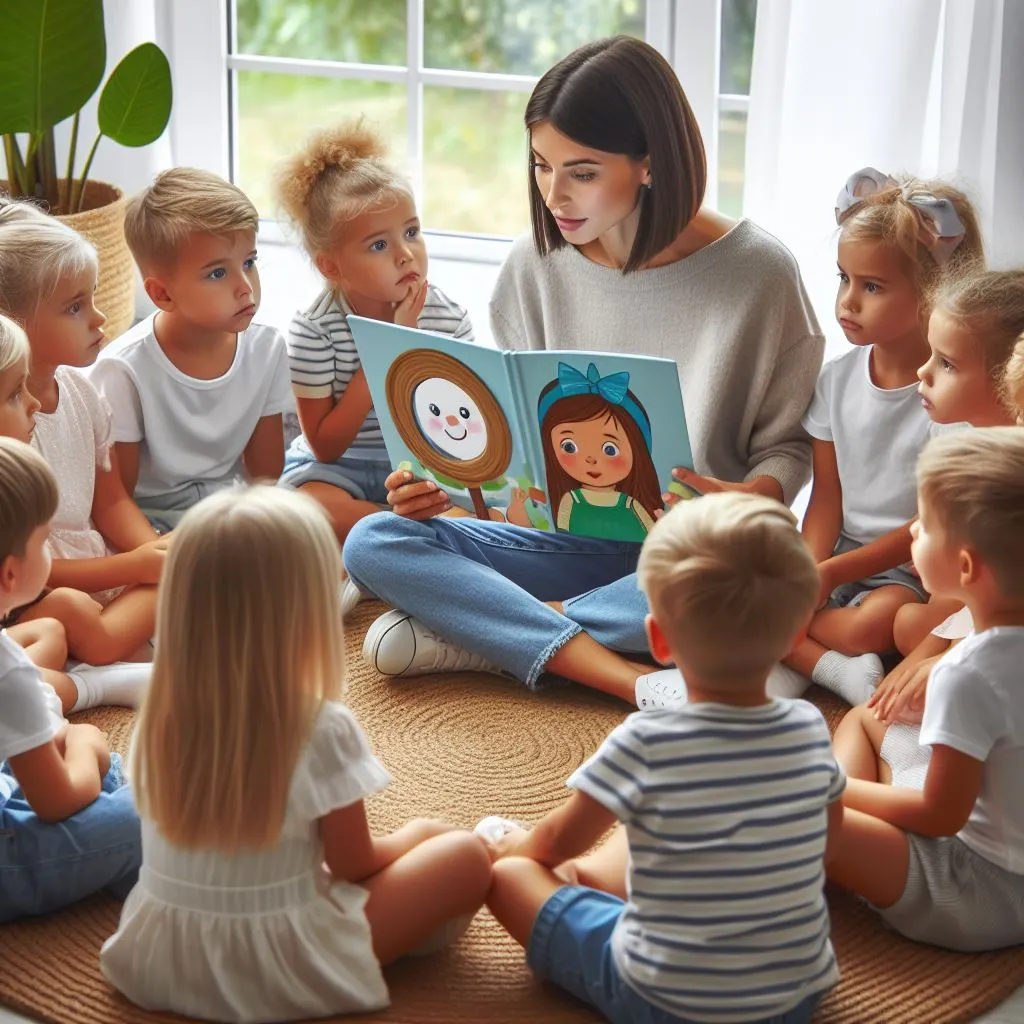
Here is 7 Activities with Explanation, Personal experiences, References!
My Accomplishments
The “My Accomplishments” activity is a great way to help preschoolers develop a sense of pride and accomplishment. It involves having children reflect on something they have achieved and sharing it with the group. This activity can be done individually or in a group setting.
Benefits
- Developing a sense of pride and accomplishment
- Encouraging self-reflection and self-awareness
- Building self-esteem and confidence
- Providing opportunities for children to practice public speaking and communication skills
Process
Introduction: Explain to the children that they are going to think about something they have accomplished recently. This could be anything from learning to tie their shoes to drawing a picture.
Individual reflection: Have each child take a few minutes to think about something they are proud of achieving. Encourage them to think about what they did, how they did it, and why they are proud of it.
Sharing: Have each child share their accomplishment with the group. Encourage them to use descriptive language and provide details about what they did.
Group discussion: After each child has shared, have a group discussion about what they noticed. Encourage children to ask questions and provide positive feedback to their peers.
Celebration: Celebrate the accomplishments of each child. This could be as simple as giving them a high five or a sticker, or you could create a bulletin board display to showcase their achievements.
Variations
You can make the activity more interactive by creating a “My Accomplishments” chart or graph. Have each child add a sticker or mark to the chart every time they accomplish something new.
You can also extend the activity by having children create a “My Accomplishments” book. Encourage them to draw pictures or write about their achievements and add them to the book over time.
Tips for facilitating the sharing session and encouraging children to participate
Create a safe and supportive environment: Make sure the children feel comfortable sharing their accomplishments with the group. Encourage positive feedback and avoid negative comments.
Use open-ended questions: Ask questions that require more than a yes or no answer. For example, “What did you enjoy most about learning how to ride a bike?” or “What was the most challenging part of learning how to write your name?”
Give children time to think: Allow children time to process their thoughts and formulate their responses. Some children may need more time than others to share.
Model active listening: Show the children that you are actively listening by maintaining eye contact, nodding your head, and asking follow-up questions.
Encourage participation: Encourage all children to participate, even if they are shy or hesitant. You can do this by giving positive feedback and praise for their efforts.
Use a talking object: Consider using a talking object, such as a stuffed animal or a ball, to help children take turns sharing. The child holding the object is the only one allowed to speak.
Keep it positive: Encourage children to focus on their positive accomplishments and avoid comparing themselves to others.
Follow up: After the sharing session, follow up with the children individually to reinforce their positive self-concept and motivation. This will help to build their self-esteem and confidence.
My Hopes and Dreams
The “My Hopes and Dreams” activity is a great way to help preschoolers develop a sense of purpose and motivation. It involves having children reflect on their hopes and dreams for the future and sharing them with the group. This activity can be done individually or in a group setting.
Benefits
Encouraging children to think about their goals and aspirations
Developing a sense of purpose and motivation
Building self-esteem and confidence
Providing opportunities for children to practice communication and listening skills
Process
Introduction: Explain to the children that they are going to think about their hopes and dreams for the future. This could be anything from what they want to be when they grow up to what they hope to accomplish this week.
Individual reflection: Have each child take a few minutes to think about their hopes and dreams. Encourage them to think about what they want to achieve, why it’s important to them, and what they can do to make it happen.
Sharing: Have each child share their hopes and dreams with the group. Encourage them to use descriptive language and provide details about what they hope to achieve.
Group discussion: After each child has shared, have a group discussion about what they noticed. Encourage children to ask questions and provide positive feedback to their peers.
Goal-setting: Help children set achievable goals related to their hopes and dreams. This could be as simple as making a picture or writing a sentence about what they want to achieve, or you could create a goal-setting worksheet to help them plan out the steps they need to take to reach their goal.
Celebration: Celebrate the hopes and dreams of each child. This could be as simple as giving them a high five or a sticker, or you could create a bulletin board display to showcase their aspirations.
Variations
You can make the activity more interactive by creating a “Dream Jar” or “Wish Box.” Encourage children to write or draw their hopes and dreams on a piece of paper and place them in the jar or box.
You can also extend the activity by having children create a “Dream Board” or “Vision Board” with pictures and words that represent their hopes and dreams.
Mirror Mirror
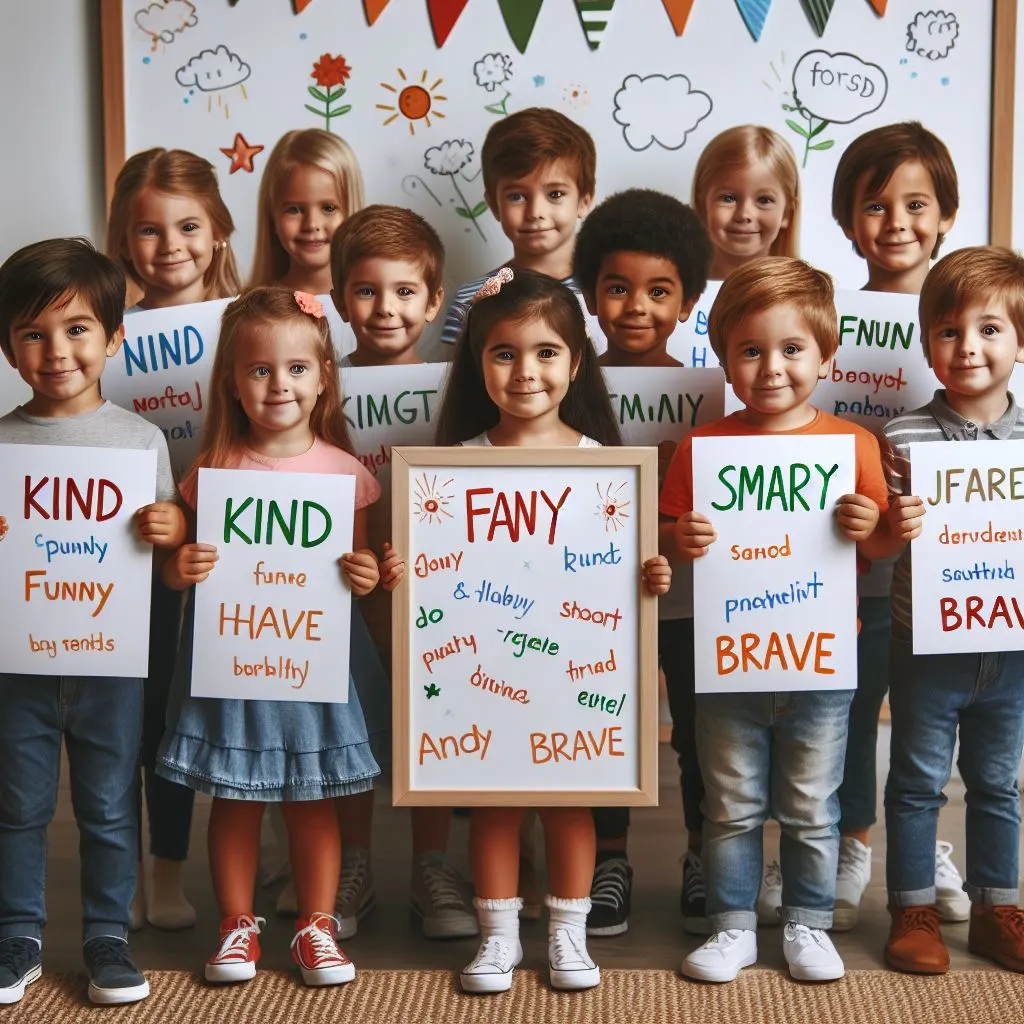
“Mirror, Mirror” is a simple yet powerful activity that helps preschoolers develop self-awareness and a positive self-image. It involves having children look at themselves in a mirror and describe what they see. This activity can be done individually or in a group setting.
Benefits
- Developing self-awareness and self-esteem
- Encouraging positive self-talk and self-expression
- Helping children identify and appreciate their unique features and qualities
- Building vocabulary related to physical attributes and body parts
Process
Set up: Place a mirror in a location where children can easily see themselves. You can use a full-length mirror or a smaller handheld mirror. Make sure the mirror is secure and won’t tip over.
Introduction: Explain to the children that they are going to look in the mirror and describe what they see. Encourage them to use positive language to describe themselves.
Modeling: Model the activity by looking in the mirror and describing what you see. Use descriptive words such as “I see my brown hair,” “I have two eyes,” or “I have a big smile.”
Individual reflection: Have each child take turns looking in the mirror and describing what they see. Encourage them to point to different body parts and talk about their features. You can prompt them with questions such as “What color are your eyes?” or “How many fingers do you have?”
Group discussion: Once everyone has had a turn, have a group discussion about what they noticed about themselves. Encourage children to share their observations and celebrate their unique qualities. You can ask questions such as “What makes you special?” or “What do you like about yourself?“
Closure: Summarize the activity by reinforcing the importance of self-awareness and positive self-talk. Encourage children to practice looking in the mirror and describing themselves in a positive way every day.
Variations
You can make the activity more interactive by adding props such as hats, scarves, or sunglasses. Encourage children to describe how they look with the props on.
You can also extend the activity by having children draw a self-portrait based on what they see in the mirror. Encourage them to include their unique features and qualities.
My Family Tree
“My Family Tree” is a fun and educational activity that helps preschoolers learn about their family history and develop a sense of belonging. It involves creating a visual representation of the child’s family, including parents, siblings, grandparents, and other relatives. This activity can be adapted to suit children of different ages and can be done individually or in a group setting.
Benefits
Developing a sense of family history and identity
Encouraging children to ask questions and learn about their ancestors
Building vocabulary related to family relationships
Providing opportunities for children to practice fine motor skills and creativity
Process
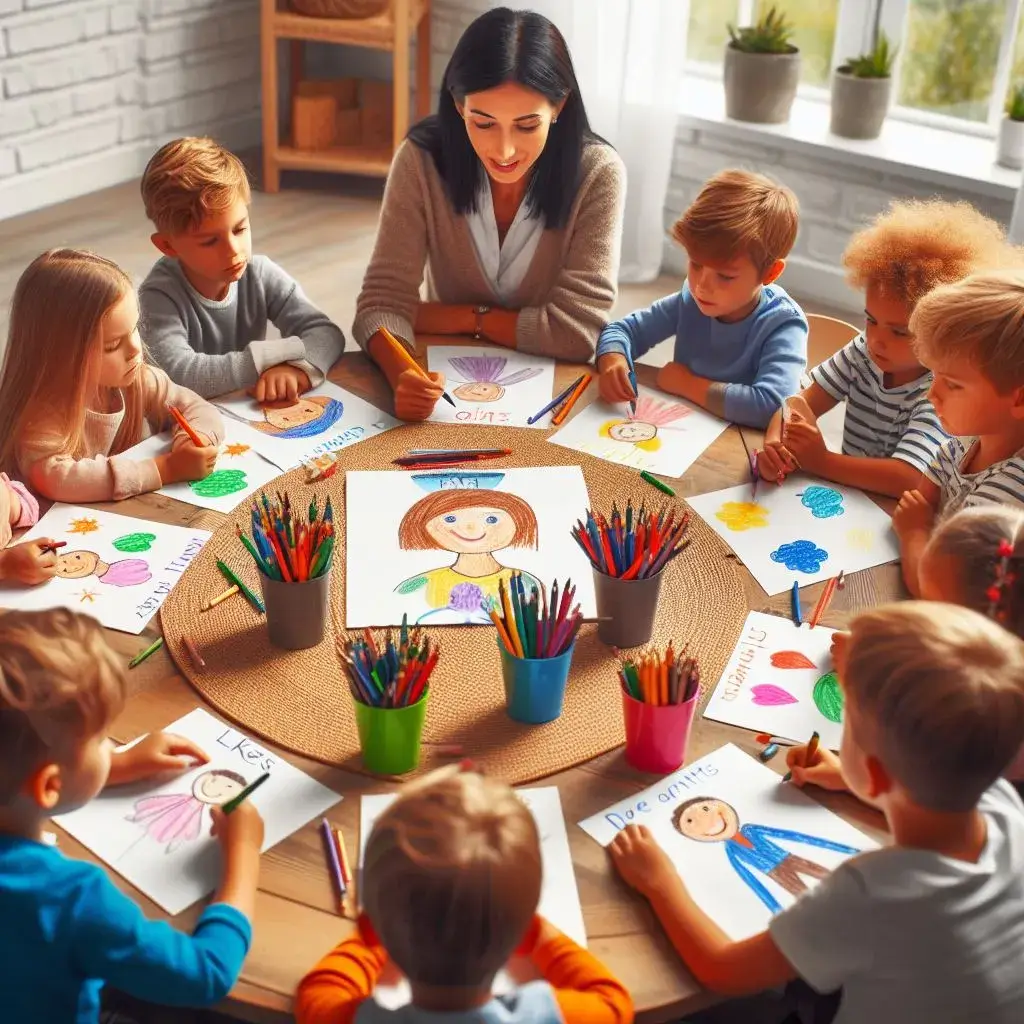
Introduction: Explain to the children that they are going to create a family tree. Show them an example of a family tree, if possible, and explain how it works.
Preparation: Provide each child with a piece of paper or a template for their family tree. You can find many free templates online or create your own.
Brainstorming: Encourage the children to think about their family members. Ask them questions such as “Who lives in your house?” “Do you have any brothers or sisters?” “Who are your grandparents?”
Drawing: Have the children draw pictures of their family members on the family tree. Encourage them to add details such as hair color, clothing, and facial features.
Labeling: Help the children label each family member with their name and relationship to the child (e.g., “Mom”, “Grandma”, etc.).
Discussion: Once everyone has completed their family trees, have a group discussion about what they noticed. Encourage children to share interesting facts about their family members and ask questions about other children’s families.
Display: Display the family trees in the classroom or at home, and encourage the children to share them with family members and friends.
Variations
You can make the activity more interactive by inviting family members to come in and share stories or photos.
You can also extend the activity by having children create a family scrapbook or photo album.
My Favorite Things
“My Favorite Things” is a fun and engaging activity that helps preschoolers develop language and communication skills, while also exploring their interests and preferences. It involves creating a list or collage of the child’s favorite things, such as foods, toys, and activities.
Benefits
- Develops language and communication skills
- Encourages children to express their preferences and interests
- Builds self-esteem and confidence
- Provides opportunities for creativity and self-expression
- Promotes positive self-identity
Process
Introduction: Explain to the children that they will be creating a list or collage of their favorite things. Encourage them to think about their favorite foods, toys, activities, and anything else that brings them joy.
Brainstorming: Ask the children to brainstorm a list of their favorite things. You can write the list on a whiteboard or chart paper, or have the children write their own lists on individual pieces of paper.
Creating the collage: Provide the children with a piece of paper or a poster board, and encourage them to create a collage of their favorite things. They can draw pictures, cut out images from magazines, or print out pictures from the internet.
Sharing: Once everyone has completed their collages, have a sharing session. Encourage each child to share their collage with the group and talk about why they chose their favorite things.
Display: Display the collages in the classroom or at home, and encourage the children to share them with family members and friends.
Variations:
You can make the activity more interactive by having the children work in pairs or small groups to create their collages.
You can also extend the activity by having children create a “favorite things” book, where they write or draw pictures of their favorite things on each page.
Feelings Charades
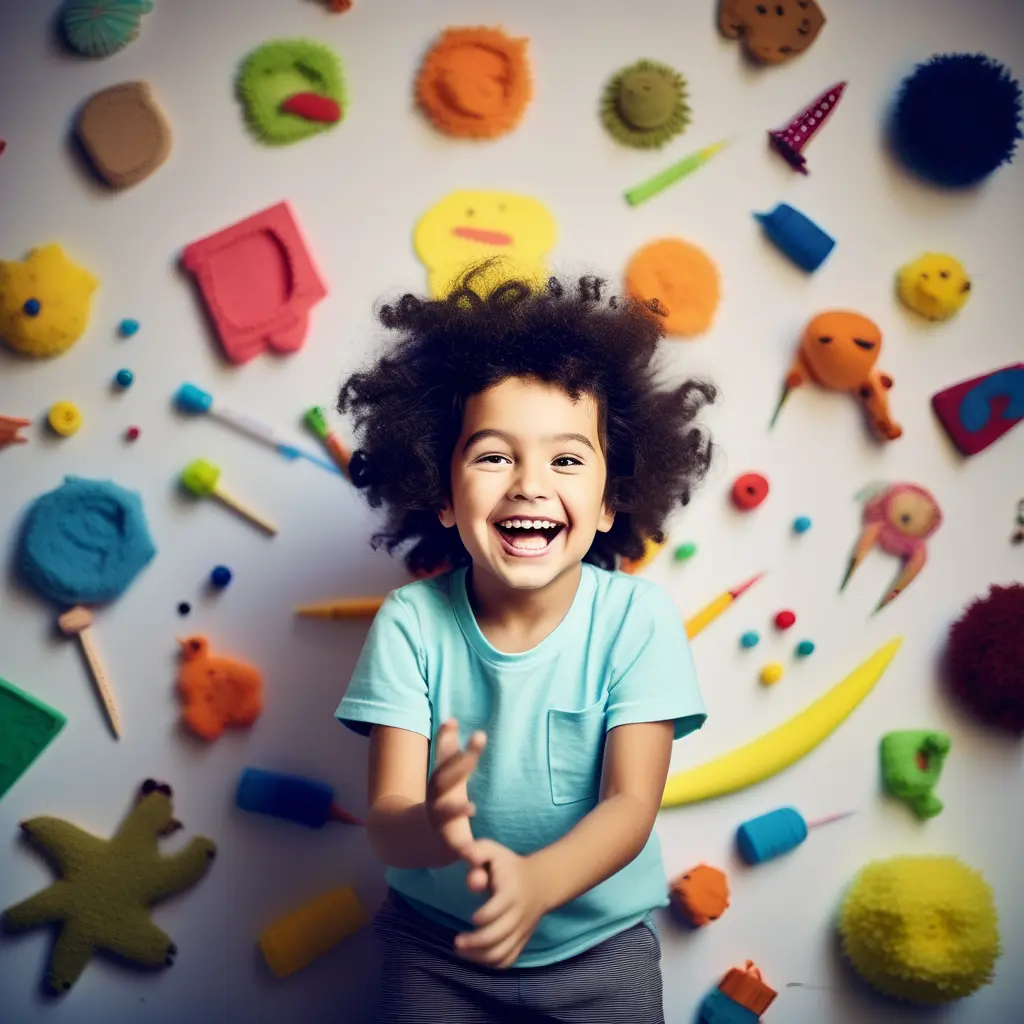
Feelings Charades is a fun and engaging activity that helps preschoolers develop emotional intelligence and social skills. It involves acting out different emotions and guessing what the emotion is, which can help children learn to identify and express their own emotions, as well as understand and respond to the emotions of others.
Benefits
Develops emotional intelligence and social skills
Encourages children to express their emotions in a healthy way
Builds empathy and understanding of others’ feelings
Promotes active listening and observation skills
Provides opportunities for creativity and self-expression
Process
Introduction: Explain to the children that they will be playing a game of Feelings Charades. Tell them that you will be acting out different emotions and they have to guess what the emotion is.
Choosing the emotions: Choose a list of emotions that are appropriate for preschoolers, such as happy, sad, angry, scared, surprised, and tired. You can write these emotions on slips of paper and place them in a hat or bowl.
Acting out the emotions: One child will choose an emotion from the hat or bowl and act it out without speaking. The other children will try to guess what the emotion is.
Guessing the emotion: Encourage the children to guess the emotion by using descriptive words or phrases. For example, “You look happy because you are smiling and jumping up and down!”
Taking turns: Make sure that each child gets a turn to act out an emotion and guess the emotions of others.
Discussion: After playing the game, have a discussion with the children about the emotions they acted out and guessed. Ask them how they feel when they experience those emotions and how they can express them in a healthy way.
Variations
You can make the activity more challenging by using more complex emotions or adding props and costumes.
You can also extend the activity by having children draw pictures of the emotions or write stories about them.
Tips for facilitating the game and encouraging children to participate
Model the emotions: Show the children how to act out each emotion before the game begins. This will help them understand what they are supposed to do and give them ideas for their own performances.
Keep it positive: Encourage children to express their emotions in a positive and healthy way. Avoid negative or aggressive behaviors.
Allow for mistakes: It’s okay if children make mistakes or don’t guess the emotions correctly. Encourage them to keep trying and praise their efforts.
Use positive reinforcement: Give children positive feedback and praise for their performances and guesses. This will help build their confidence and self-esteem.
Make it fun: Keep the game light and fun, and encourage the children to use their creativity and imagination.
Follow up: After the game, ask the children to draw or write about their favorite emotion and how they can express it in a healthy way. This will help reinforce the lessons learned during the game.
I Am Special
“I Am Special” is an activity that helps preschoolers develop a positive self-concept by exploring their unique qualities and strengths. It encourages children to think about what makes them special and helps them build self-esteem and confidence.
Benefits
- Develops a positive self-concept and self-esteem
- Encourages children to recognize their unique qualities and strengths
- Promotes self-awareness and self-expression
- Provides opportunities for creativity and imagination
- Builds communication and storytelling skills
Process
Introduction: Explain to the children that they will be thinking about what makes them special and creating a piece of artwork or writing to express it.
Brainstorming: Ask the children to think about their unique qualities and strengths, such as their talents, interests, and physical characteristics. Write these down on a whiteboard or piece of paper.
Creating: Encourage the children to create a piece of artwork or writing that reflects what makes them special. This could be a drawing, a painting, a collage, or a story.
Sharing: Once everyone has had time to create, invite each child to share their piece with the group. Encourage them to talk about why they chose the qualities and strengths they did, and how they feel about them.
Discussion: After each child shares, ask follow-up questions and encourage the other children to offer praise and positive feedback. This will help build a supportive and encouraging environment.
Display: Create a display of the children’s artwork or writing in the classroom or at home. This will help reinforce their positive self-concept and self-esteem.
Variations:
You can make the activity more interactive by having children work in pairs or small groups to create a group piece that reflects what makes them special as a team.
You can also extend the activity by having children create a “My Special Book”, where they write or draw pictures of their unique qualities and strengths and reflect on why they are proud of them.
Tips for facilitating the sharing session and encouraging children to participate
Create a safe and supportive environment: Make sure the children feel comfortable sharing their artwork or writing with the group. Encourage positive feedback and avoid negative comments.
Use open-ended questions: Ask questions that require more than a yes or no answer. For example, “What do you like most about your artwork?” or “What makes you proud of your unique qualities?”
Give children time to think: Allow children time to process their thoughts and formulate their responses. Some children may need more time than others to share.
Model active listening: Show the children that you are actively listening by maintaining eye contact, nodding your head, and asking follow-up questions.
Encourage participation: Encourage all children to participate, even if they are shy or hesitant. You can do this by giving positive feedback and praise for their efforts.
Use a talking object: Consider using a talking object, such as a stuffed animal or a ball, to help children take turns sharing. The child holding the object is the only one allowed to speak.
Keep it positive: Encourage children to focus on their positive qualities and strengths and avoid comparing themselves to others.
Follow up: After the sharing session, follow up with the children individually to reinforce their positive self-concept and self-esteem. This will help to build their self-confidence and self-awareness.
Summary table for the self-concept activities for preschoolers:
| Activity Name | Short Meaning | Process |
|---|---|---|
| My Accomplishments | Reflecting on achievements | – Introduce the activity and ask children to think about something they have accomplished recently. – Have each child share their accomplishment with the group. – Encourage descriptive language and details. – Have a group discussion about the accomplishments. – Celebrate each child’s accomplishments. |
| My Hopes and Dreams | Reflecting on goals and aspirations | – Introduce the activity and ask children to think about their hopes and dreams for the future. – Have each child share their hopes and dreams with the group. – Encourage descriptive language and details. – Have a group discussion about the hopes and dreams. – Help children set achievable goals related to their hopes and dreams. – Celebrate each child’s hopes and dreams. |
| Mirror Mirror | Developing self-awareness and positive self-image | – Set up a mirror in a safe location. – Introduce the activity and explain that children will look in the mirror and describe what they see. – Model the activity by describing yourself in positive language. – Have each child take turns looking in the mirror and describing what they see. – Encourage positive self-talk and self-expression. – Have a group discussion about the activity and celebrate each child’s unique qualities. |
| My Family Tree | Learning about family history and developing a sense of belonging | – Introduce the activity and explain what a family tree is. – Provide each child with a piece of paper or a template for their family tree. – Encourage children to think about their family members and ask questions to help them brainstorm. – Have children draw pictures of their family members on the family tree and label them. – Have a group discussion about the family trees and encourage children to share interesting facts about their families. – Display the family trees in the classroom or at home. |
| My Favorite Things | Exploring interests and preferences | – Introduce the activity and explain that children will create a list or collage of their favorite things. – Encourage children to think about their favorite foods, toys, activities, and anything else that brings them joy. – Have children create a collage of their favorite things using drawings, magazine cutouts, or printed pictures. – Once everyone has completed their collages, have a sharing session and encourage each child to talk about why they chose their favorite things. – Display the collages in the classroom or at home. |
| Feelings Charades | Developing emotional intelligence and social skills | – Introduce the game and choose a list of emotions appropriate for preschoolers. – One child will choose an emotion from the hat or bowl and act it out without speaking. – The other children will try to guess what the emotion is. – Encourage descriptive language and positive reinforcement. – After playing the game, have a discussion about the emotions and how to express them in a healthy way. |
| I Am Special | Developing a positive self-concept | – Introduce the activity and explain that children will think about what makes them special. – Encourage children to think about their unique qualities and strengths. – Have children create a piece of artwork or writing that reflects what makes them special. – Once everyone has had time to create, invite each child to share their piece with the group. – Encourage positive feedback and praise. – Display the children’s artwork or writing in the classroom or at home. |
References
- Isenberg, J. P., & Jalongo, M. R. (2016). Early childhood curriculum: Planning, implementing, and evaluating (7th ed.). Pearson Education.
- Gartrell, D. (2016). Building on the strengths of children birth to age eight (6th ed.). Cengage Learning.
- NAEYC. (2010). Developmentally appropriate practice in early childhood programs serving children from birth through age
- Zero to Three. (2018). Promoting positive self-identity in infants and toddlers. Zero to Three.

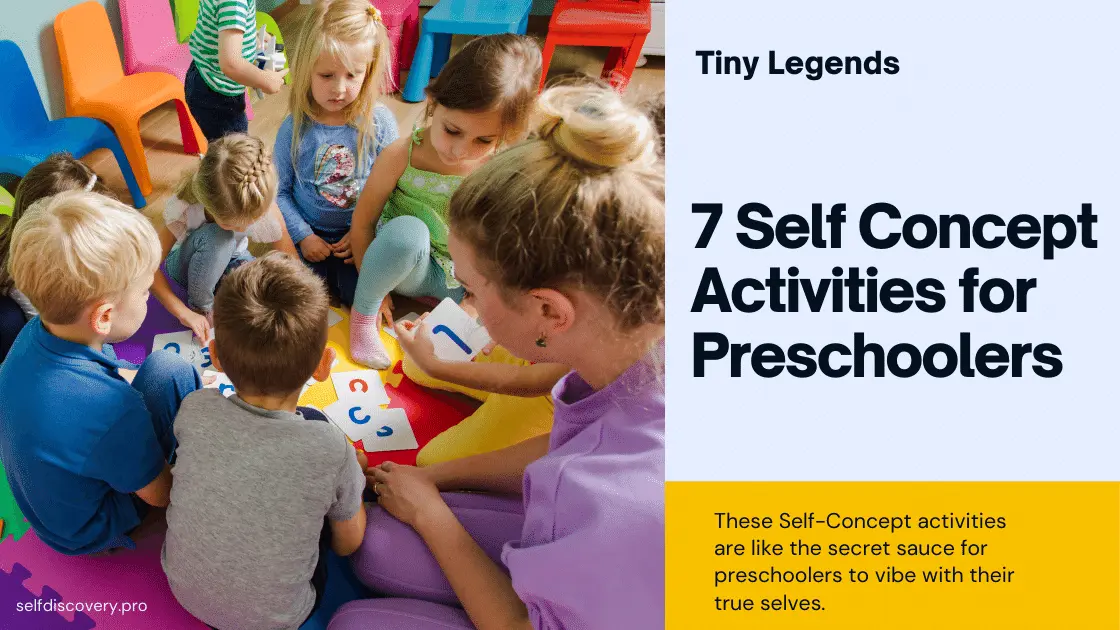

I am genuinely amazed with your deep insights and excellent writing style. Your expertise is evident in every sentence. It’s evident that you spend considerable time into understanding your topics, and this effort pays off. Thanks for providing such valuable insights. Keep up the great work!